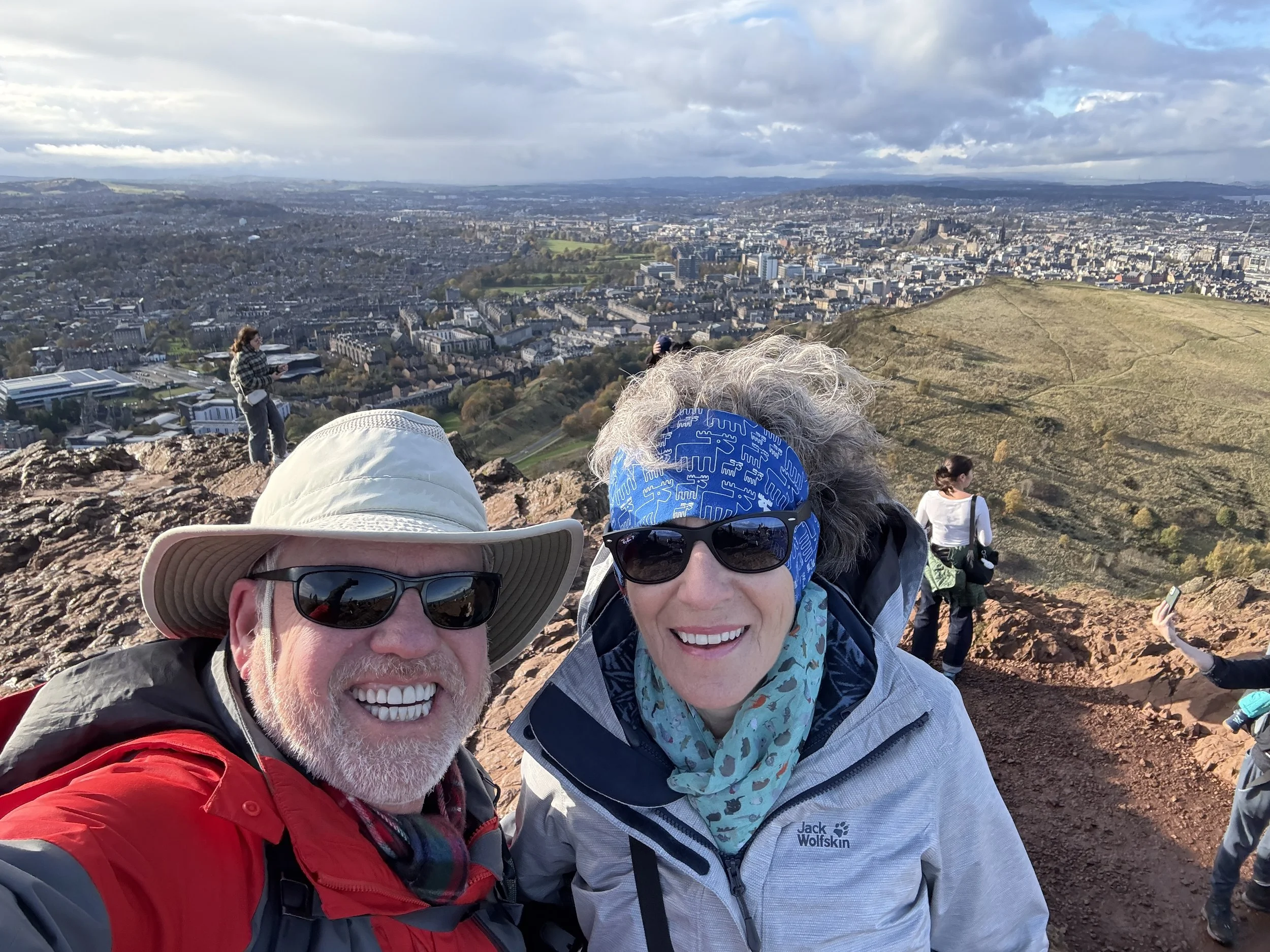Edinburgh: Day 3
Plan of the Day: Calton, Calton Hill, Arthur’s Seat, Royal Mile, Saint Gile’s Cathedral and return to the Top Hat House for dinner.
Calton Hill (the neighborhood)
Calton Hill is a mix of bustling commercial areas and quiet residential streets. First we explored the Calton Hill neighborhood which was a quaint section along a creek. The arching bridge provided a great backdrop for images. These residences used to be housing for workers, back in the day, though we are not sure what the industry was. Now there are highly coveted flats.
Calton Hill
Calton Hill is a volcanic hill rising beyond the eastern end of Princes Street. The hill boasts a collection of some of Edinburgh’s most important monuments and offers fantastic panoramic views of the city. In the 19th century, Edinburgh was envisioned as the ‘Athens of the North’ and Calton Hill was considered Edinburgh’s version of the Athenian Acropolis, complete with classical revival architecture.
Key Features:
Monuments: Calton Hill is home to several neoclassical structures, including the National Monument, the City Observatory and the Dugald Stewart Monument. Calton Hill is also home to the Nelson Monument which was completed in 1816 to commemorate the death of Admiral Lord Nelson at the Battle of Trafalgar in 1805.
Panoramic Views: The hill’s elevated position provides great views of Edinburgh’s skyline, including iconic landmarks like the Edinburgh Castle, Arthur’s Seat, and the Old Town. It offers a unique perspective of the city’s layout, presenting views down to Leith and across the Firth of Forth. Of course for me this gave me plenty of opportunities to capture great views.
Royal Mile
This morning the winds were still very strong so our guide felt it was a wise choice to head to the Royal Mile and Saint Gile’s Cathedral before we climbed Arthur’s Seat. We strolled near Grassmarket street a popular tourist destination. The most popular storefront was the “official” Harry Potter museum. Check out the long line. There were no long lines getting into the castle because we weren’t able to get tickets today. It’s okay, Karen and I had been here before and enjoyed our tour. We were surprised at how crowded the city was for what we thought was the end of the season.
St Giles’ Cathedral
The history of St Giles’ Cathedral, spans 900 years, from early beginnings as a Romanesque church in 1124 to its current standing as a modern Presbyterian church. St Giles’ Cathedral, founded in 1124 by King David I, has been a working church ever since. A backdrop to Scotland’s turbulent religious history, it has seen the seeds of civil war sown and been John Knox’s parish church during the Reformation. It is still an important centre for civic services such as the Kirking of the Parliament and services for Most Ancient and Most Noble Order of the Thistle.
Author’s Seat
Arthur's Seat's is a rocky hill that towers over Edinburgh, with fabulous views of Edinburgh in all directions, and an extensive parkland surrounding it. Arthur's Seat is the highest of a group of hills known as the Salisbury Crags (formed from the remains of an extinct volcano which last erupted 350 million years ago), that make up Holyrood Park. The summit is 251 metres high and surprisingly rocky and wild for a hill in the centre of a major city. The climb was wet and rocky making for a very exciting climb. There were many places that you had to crab (climb on all fours) to safe climb both up and down the rocky terrain.
The paths are a combination of surfaced tracks, muddy, grassy paths, and very rocky and slippery sections. Great care is needed with footing as the paths become very slippery and difficult in wet and icy conditions. Take your time and come prepared with “proper” footwear! Nice to read that now. If only we had known we might have been better prepared. Walking sticks were an asset that we failed to grab that day.
My brother-in-law Jack (despite not having the proper footwear) and I made it to the top ahead of everyone. On the descent, Jack’s iffy footwear slid out from under him, and he just managed to not fall - twice.















































